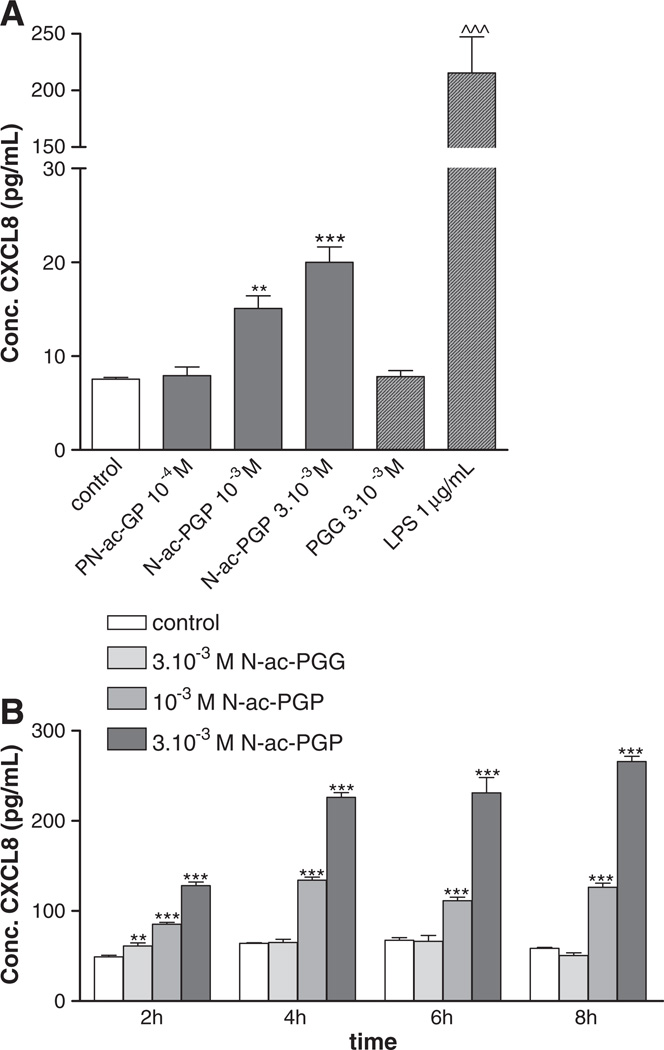Fig. 2.
N-ac-PGP induces the release of CXCL8. (A) 105 freshly isolated PMNs were stimulated for 1 hour with N-ac-PGP (10−4–3 × 10−3 M), PGG (3 × 10−3 M) or LPS (1 µg/mL). A CXCL8 ELISA was performed on the supernatants. N-ac-PGP induced the release of CXCL8 from fresh cells within an hour (**P<0.01; ***/^^^, P<0.001 vs. control). (B) 105 buffy coat isolated neutrophils were stimulated for 2, 4, 6 and 8 h with N-ac-PGP (10−7–3 × 10−3 M), PGG (3 × 10−3 M) or LPS (1 µg/mL). N-ac-PGP (10−3 M and 3 × 10−3 M) induced the release of CXCL8 from fresh cells for all measured time points (**, P<0.01; ***, P<0.001 N-ac-PGP vs. control). PGG was negative for all time points, whereas LPS was positive for all time points. Only the concentrations 3 × 10−4–3 × 10−3 M are shown here; the cells stimulated with lower concentrations N-ac-PGP did not release more CXCL8 than the control cells.

